Root Awakening: Citrus can be propagated via air-layering or grafting
Sign up now: Get ST's newsletters delivered to your inbox
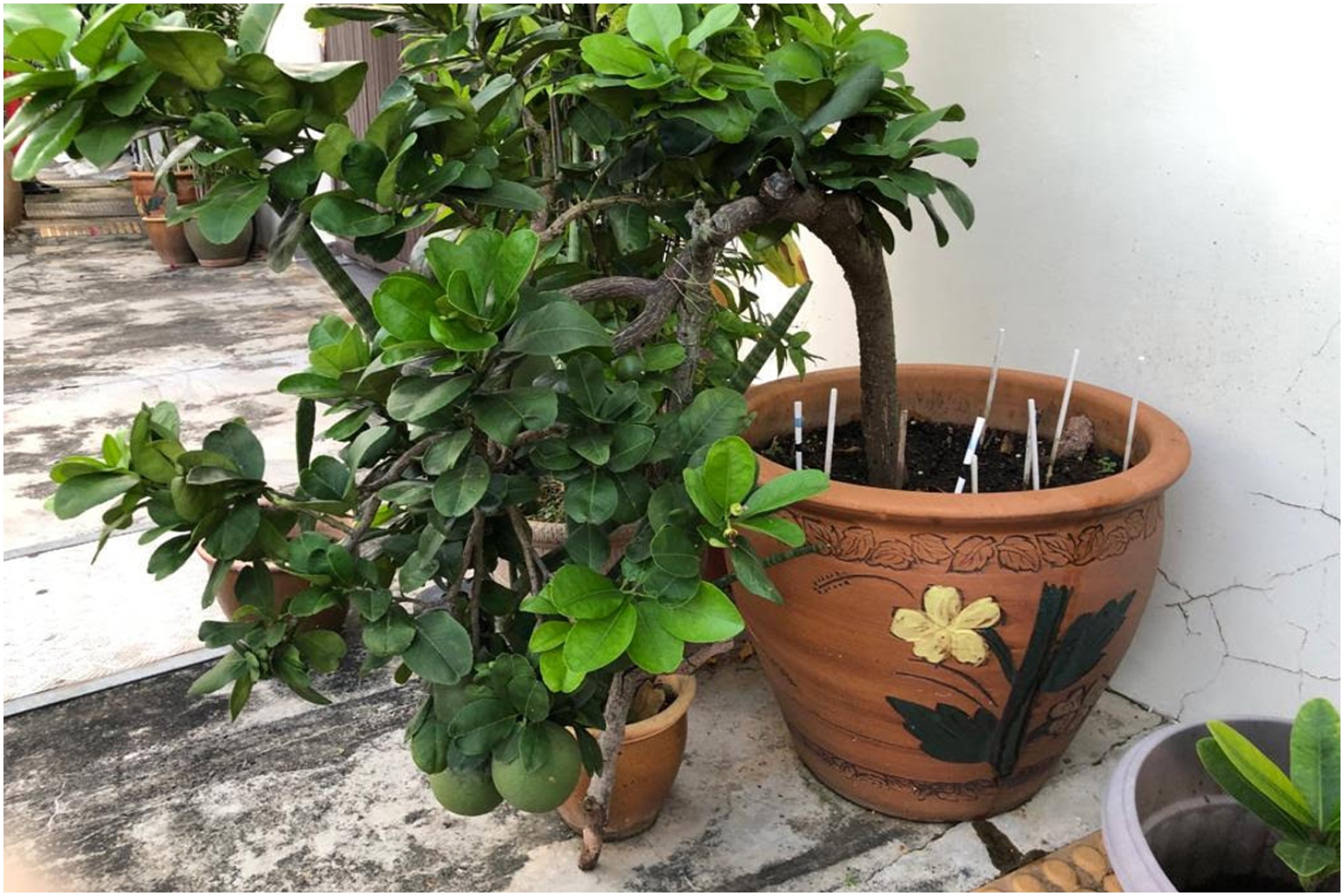
Citrus species can be difficult to root from stem cuttings.
PHOTO: WONG MUI CHOO
Follow topic:
Citrus can be propagated via air-layering or grafting
We have had this pomelo plant for more than 15 years. We tried to propagate it a few times, but failed. It almost died a few years ago, but we managed to nurture it back to health. Now, it has a few fruit and is still flowering. How can we propagate it?
Wong Mui Choo
Citrus species can be difficult to root from stem cuttings. The more conventional ways of propagating citrus are air-layering and grafting.
The first method involves the removal of a ring of bark around a woody branch and then wrapping the site with growing media. Once roots form, the branch can be cut and potted separately.
The second method involves cutting a bud or short growing tip from your plant and grafting it to root stock such as that of the lemon tree.
Neither method is straightforward and practice makes perfect in both cases. There are numerous videos online that you can refer to for specific steps.
Common houseplants are Shooting Star Hoya, Zebra Haworthia
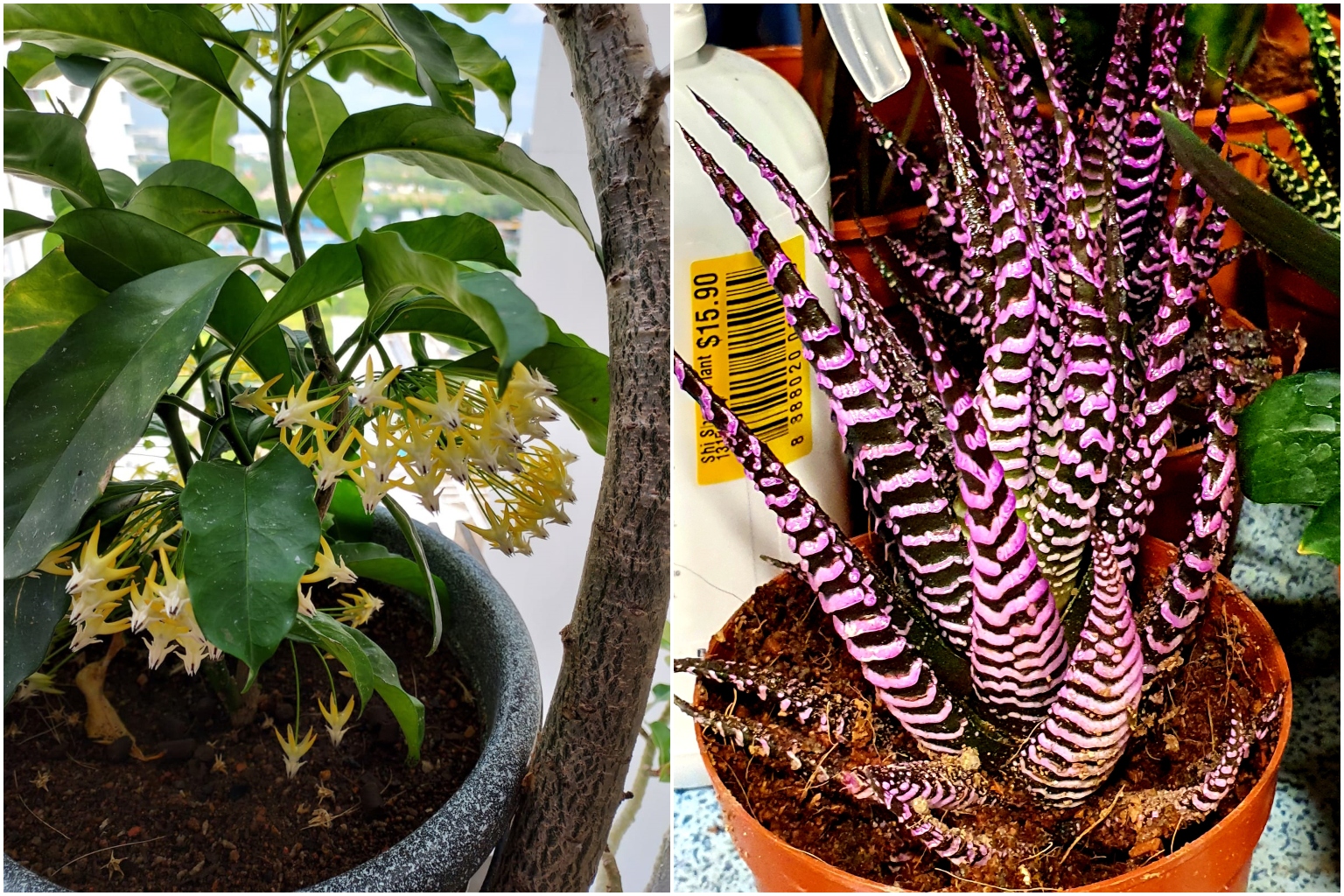
What are these plants called, where they originate from and how should they be cared for?
Wendy Myra Wee
The flowering plant is the Shooting Star Hoya (Hoya multiflora), so named due to its yellow flowers. It is widely cultivated and originates from Indonesia, the Philippines, Thailand and Borneo. It needs to be grown in a location with filtered sunlight for at least four hours a day and in a moist but porous growing mix.
The plant with leaves that have white bands arranged in a rosette formation is the Zebra Haworthia (Haworthiopsis attenuata). Plants from this genus originate mainly from South Africa.
The plant needs to be grown under either direct or filtered sunlight for at least four hours a day, and in a gritty mix to permit water drainage. It should not be grown in a fine, water-retentive mix as it will rot.
The pink leaves are spray-painted for marketing purposes and will eventually be replaced by the plant's usual dark green, white-banded leaves.
Cactus is the Monstrose Apple Cactus
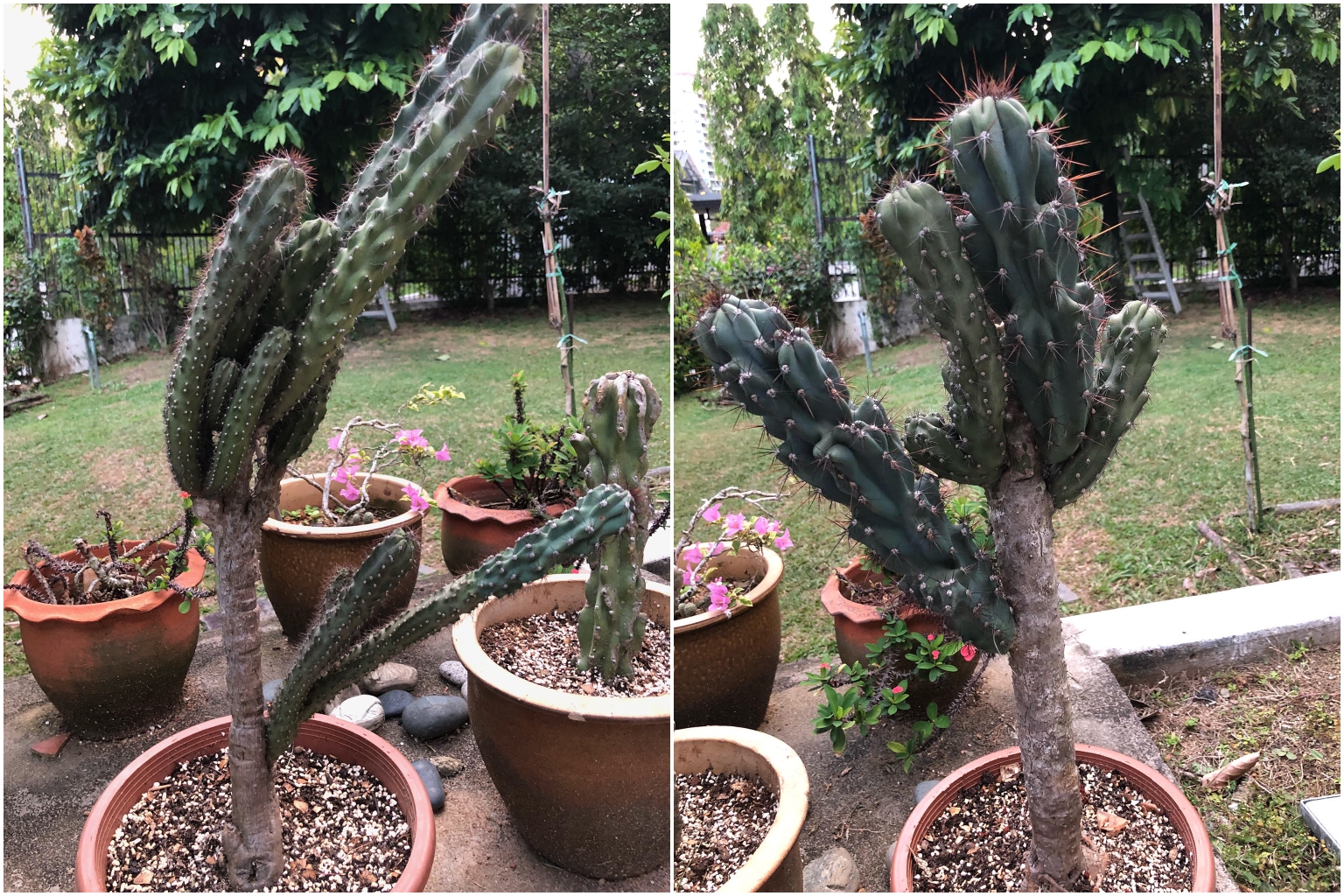
Can you identify these two plants? They are more than 20 years old.
Jessie See
The two cacti appear to be the same species, botanically known as the Monstrosus cultivar of the Cereus hildmannianus. Your cactus is the crested version of the species, with twisted, irregular undulating ribs. Its common name is the Monstrose Apple Cactus. It grows slowly and is a multi-branched plant with grey-blue coloration.
Desert rose seedlings need direct sun to thrive
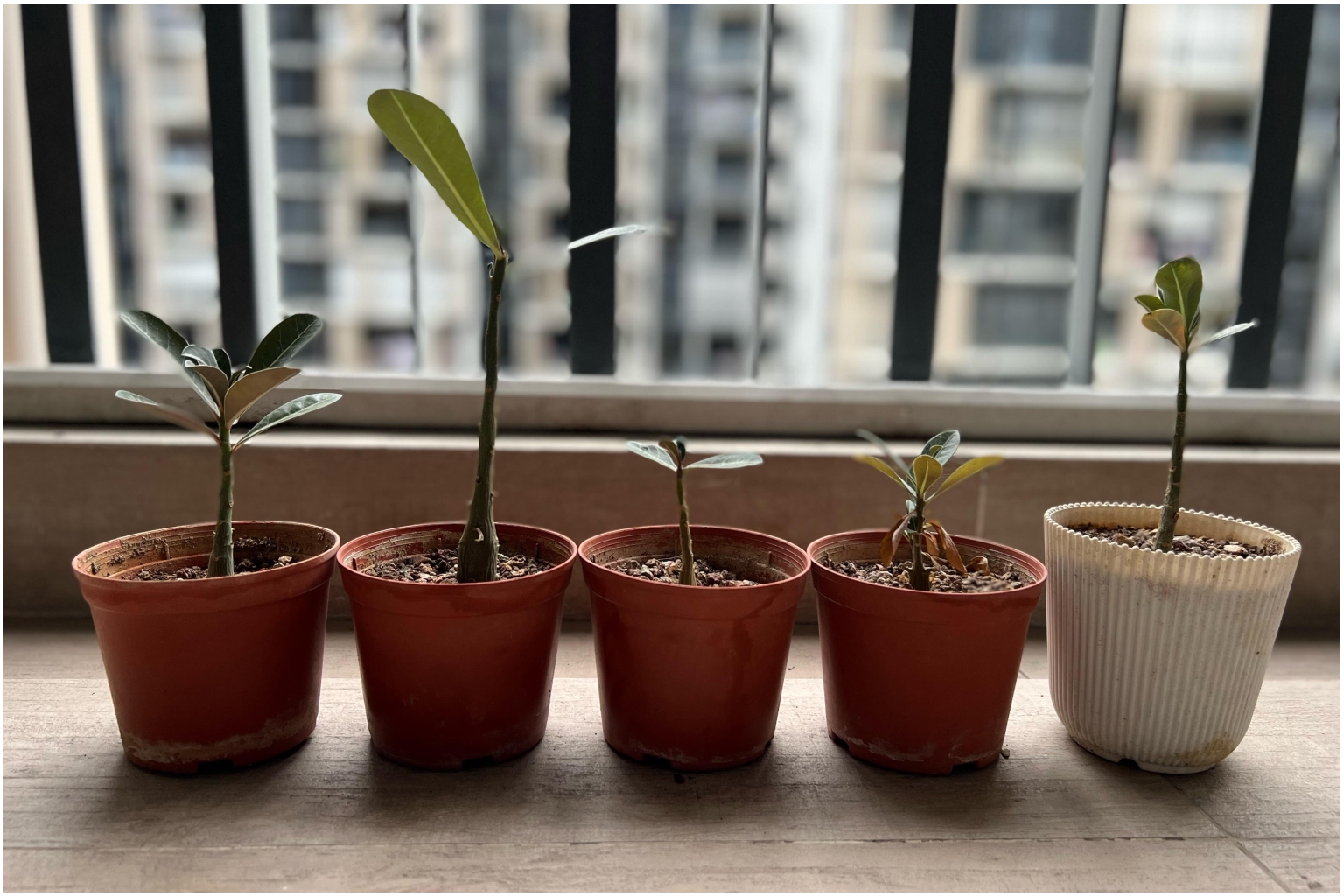
My desert roses grew from seeds about half a year ago. The plant caudex is thin and tall, but soft when pressed. The leaves are green, but occasionally turn yellow and shed, though new leaves will grow back. It has been like this for two to three months. Are my plants sick?
Augustine Chua
Your seedlings seem stretched, which suggests that they probably need more sunlight. The desert rose needs to be grown under direct sunlight for best results.
The softcaudex and yellow leaves could be due to a lack of water. Although this species is drought-tolerant, it is still susceptible to water stress and should not be allowed to dry out for long. Also, check if the media is too compacted and moist below the surface, as wet feet can cause the caudex to soften and rot.
Potted sapling is the Giant Mahang
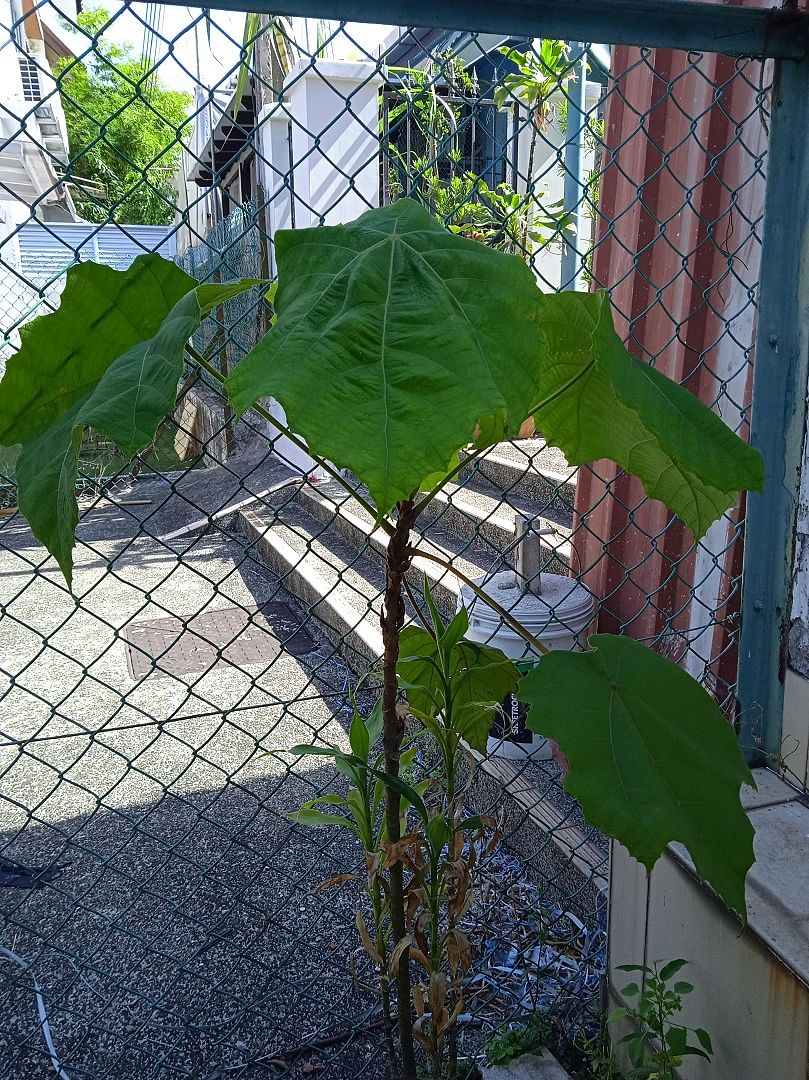
This plant started growing in my flower pot about three years ago. What is it and are there uses for it?
Thomas Soo
The plant is botanically known as Macaranga gigantea, and its common names include Elephant's Ear Tree and Giant Mahang. It is a native species of Singapore, and grows in cleared, open areas. It can grow up to 18m tall if planted in the ground. In its natural habitat, its fruit are food for various birds.
- Answers by Dr Wilson Wong, an NParks-certified practising horticulturist, parks manager and ISA-certified arborist. He is the founder of Green Culture Singapore and an adjunct assistant professor (Food Science & Technology) at the National University of Singapore.
- Have a gardening query? E-mail it with clear, high-resolution pictures of at least 1MB, if any, and your full name to stlife@sph.com.sg. We reserve the right to edit and reject questions.

